How to Chop Like a Pro
Knife skills are essential if you want to become a better cook and use the tools daily. However, not understanding how to use the blade properly can be dangerous and ruin your culinary enthusiasm. It is essential to select the proper knife and master some fundamental cuts.
5-Minute Crafts has prepared some simple tips that will help you chop like a pro.
1. Choosing the right knife handle
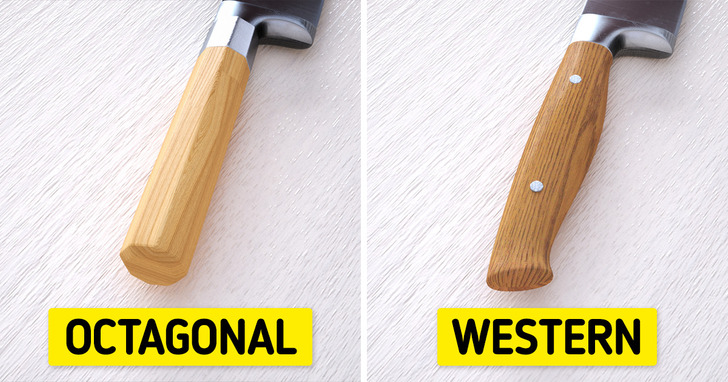
Finding a knife that suits you before you begin will make the job easier. The handles come in 2 varieties: octagon or Japanese and western. Try both and determine which form works best for you. In general, octagonal is better since its shape prevents it from slipping or twisting as easily as the others. The size is also important when choosing a chef blade — 8 inches to 10 inches (20 cm to 25 cm) should be good enough.
🔪Note: If you want to learn more about different types of knives, click here.
2. Gripping the knife
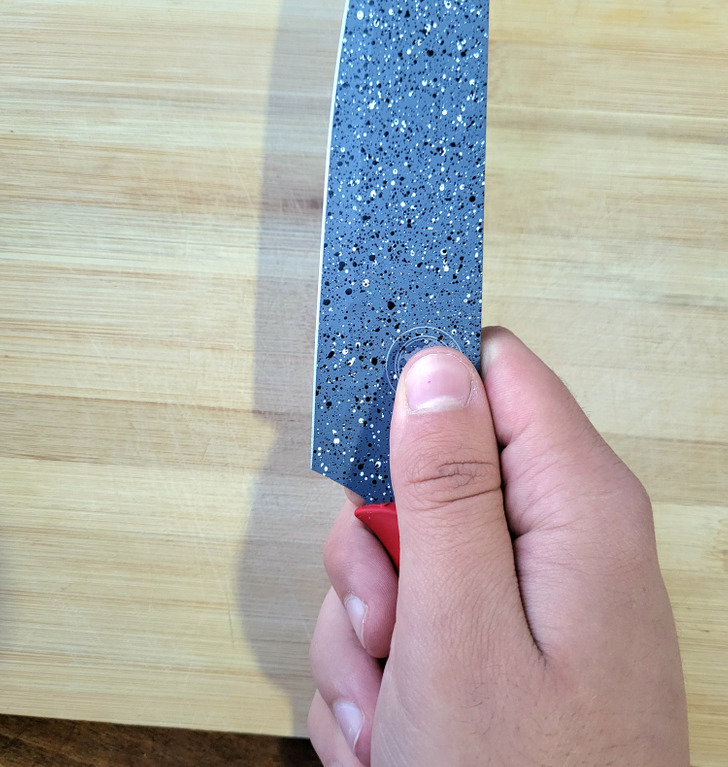
Many people hold it incorrectly, either too far back or forward. The correct way is by putting your thumb and index finger at the back of the blade and the rest of the fingers wrapped firmly around the handle. This way, you have more control over the chopping.
3. Positioning your fingers
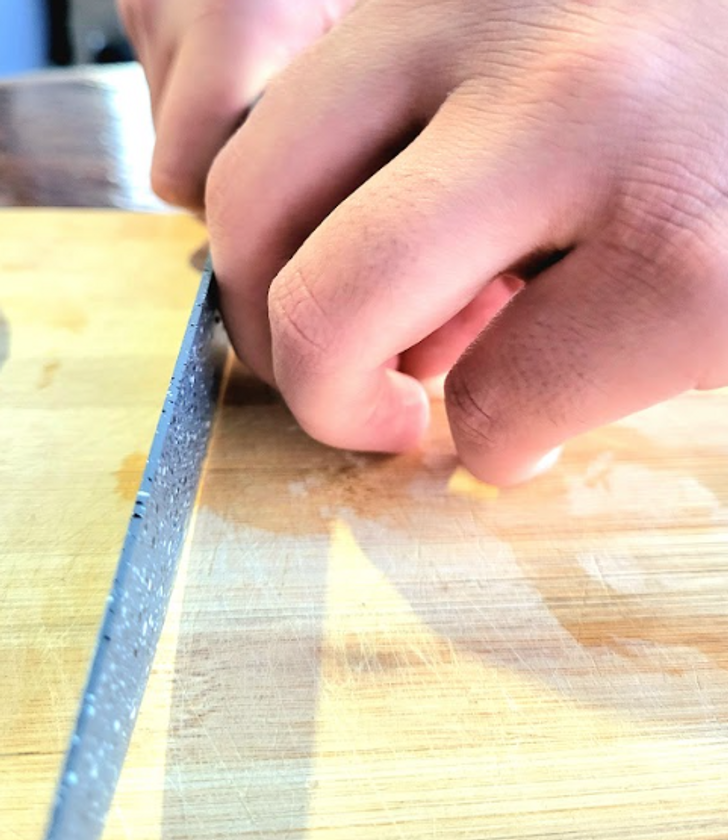
Never put your fingers flat on the board because you may injure them. Form a claw shape with the fingers. This will make the knife hit the knuckles and protect your fingertips. Another benefit of this position is added support while chopping. Don’t move the knife up and down aggressively because you won’t get an even cut. You should do a back-and-forth motion with the blade.
4. Dicing
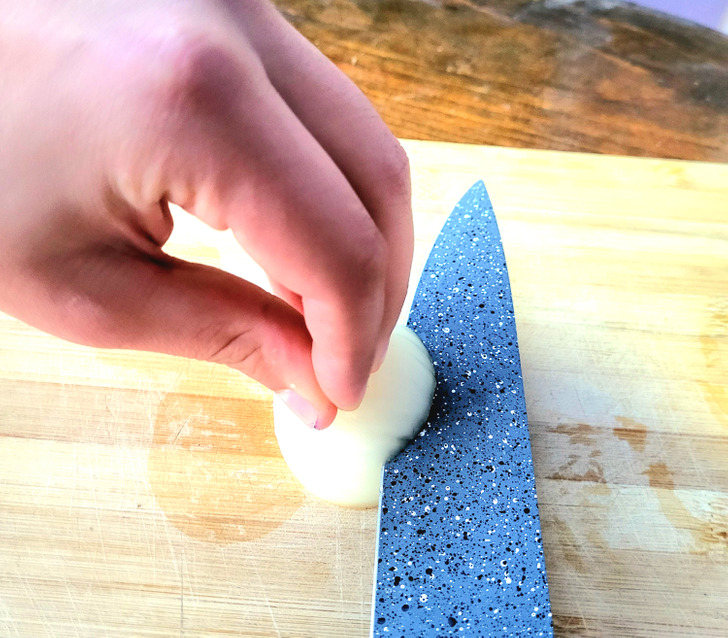
Dicing is a basic cut that you will need to master. This is used most commonly for onions. This cutting consists of a wave-like motion. Move the knife down and through the tip of the blade — the tip should never come off the chopping board.
- Cut the onion in half, then peel it.
- Put the flat side down and slice it horizontally a few times.
- Then turn it toward you.
- By creating the claw shape with your fingertips, grip the piece of food and start cutting vertically using the knuckles as a guide. Start slicing.
5. Mincing
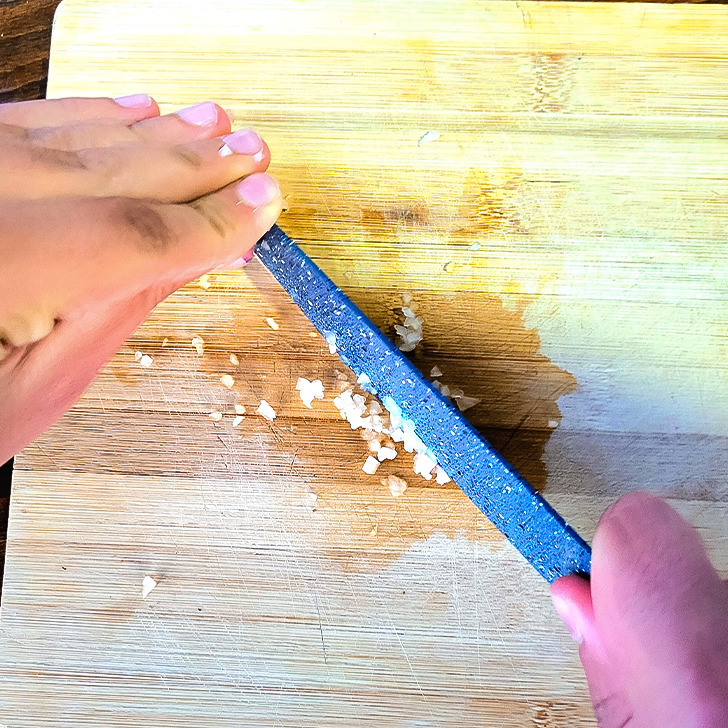
The most common cut, aside from dicing, is mincing. In order to master this chopping skill, you have to chop the food into the smallest pieces. This skill is used a lot for garlic.
- Peel the garlic by smashing it on the table.
- Start chopping horizontally in a wave motion a few times.
- Move the knife over the pieces as you occasionally stop to move the food around with your fingers until the size is formed.
- Minced food should be in pieces that are smaller than dice or chop, but not pureed.
6. Slicing
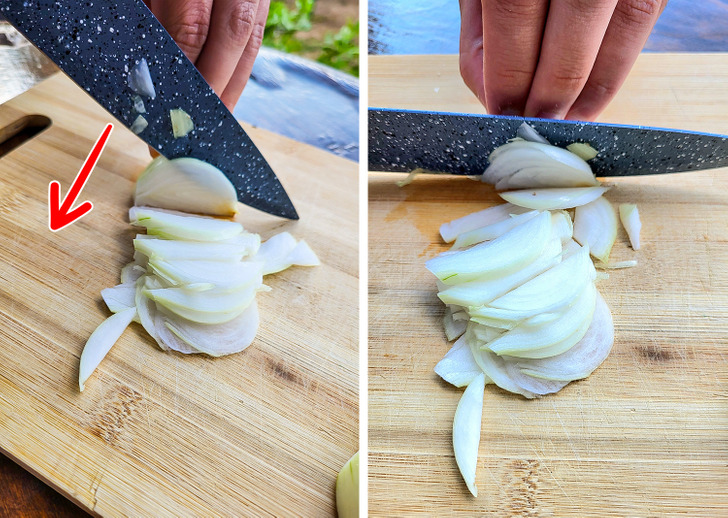
This cut is commonly used for the rough-slicing of herbs or big veggies and meats.
- Slice your onion or other vegetables in half. Doing this will make them more stable and easier to cut.
- Firmly hold the food with your other hand, and make a claw shape with your fingers.
- With the knife inclined upward and the flat side resting on your knuckles, place the tip of the blade against the cutting board.
- Pull the knife slightly until the blade cuts into the food, keeping the tip of the blade in continual contact with the cutting board.
- Continue by pushing downward and forward, slicing your food with the entire length of the blade.
- Repeat in a rotational movement, always maintaining the blade tip against the board.
7. Chop
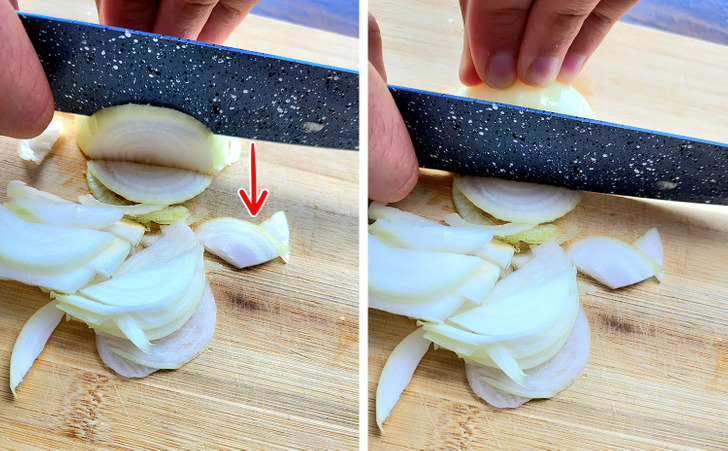
Chopping is used precisely for cutting herbs and vegetables. For this technique, you will need a very sharp blade in order to properly get the work done.
- Slice your onion or other vegetables in half. Doing this will make them more stable and easier to cut.
- Firmly hold the food with your other hand, and make a claw shape with your fingers.
- With the whole knife elevated over the chopping board, press the flat side of the knife blade against your knuckles.
- Press down in a steady, even stroke, gently sliding the blade forward as you go.
- Repeat by lifting the blade back up.
8. Back-slicing
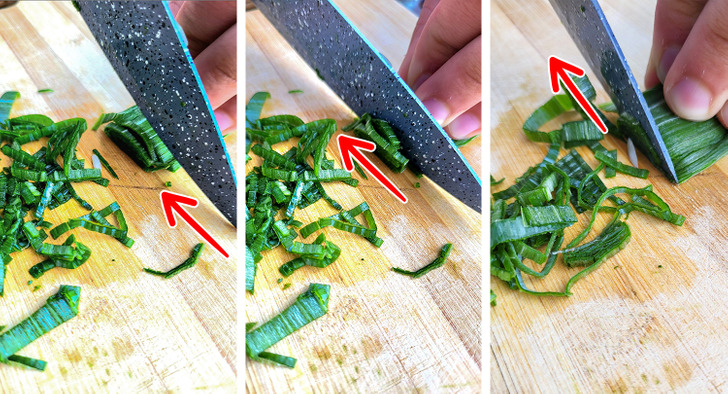
If you want to cut herbs into fine or small pieces without crushing them, this is the perfect cut to use.
- When chopping herbs, stack the leaves and roll them tightly together.
- Firmly hold the food with your other hand, and make a claw shape with your fingers.
- Place the blade point against the chopping board, with the flat side resting against your knuckles.
- Keep the knife at a very low angle and pull back gradually, slicing through the food with the whole blade length and no downward action whatsoever.
- Pull back until the point of your knife entirely cuts through the food.
- Never move the knife in a downward motion.